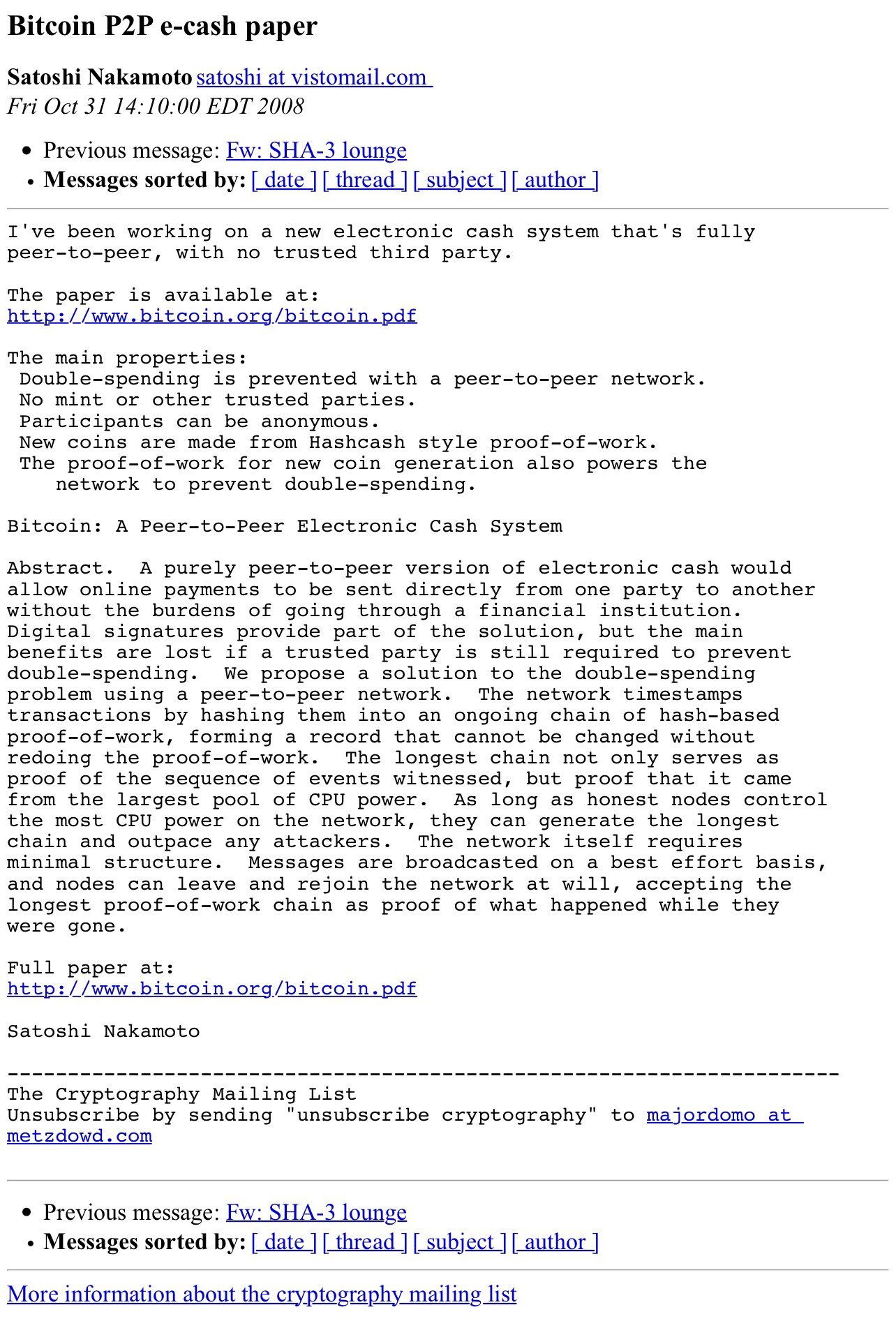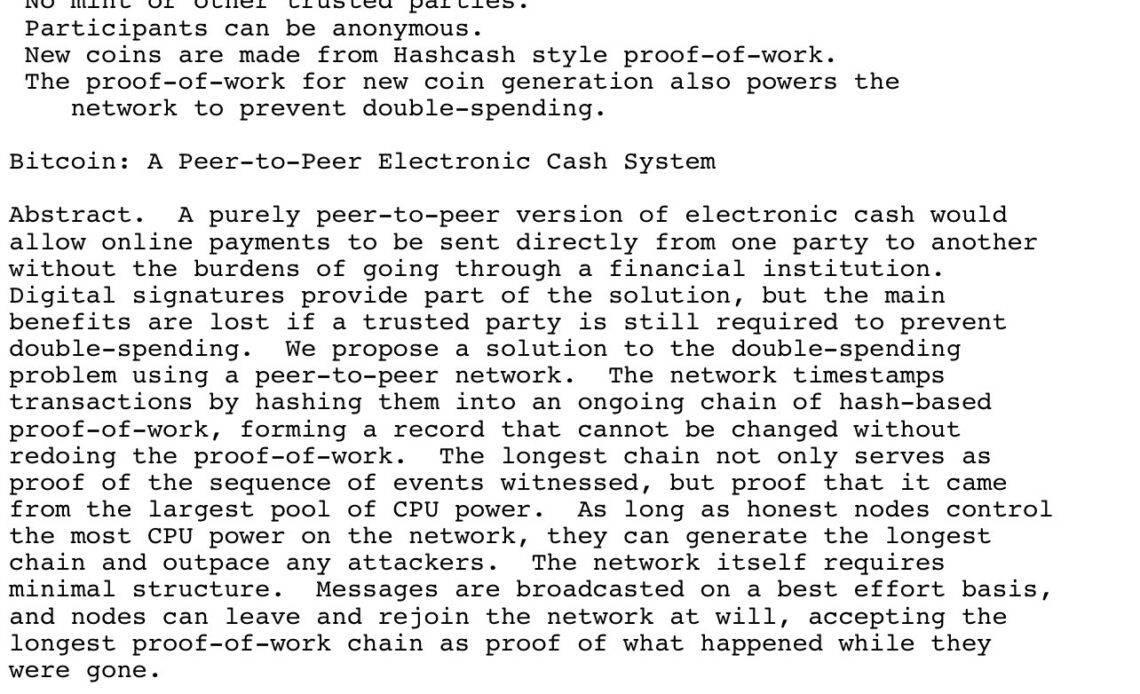Today marks 15 years since the pseudonymous creator of Bitcoin, Satoshi Nakamoto, shared the Bitcoin (BTC) white paper to a mailing list of cryptographers on Oct. 31, 2008 — a date also annually celebrated as Halloween.
“I’ve been working on a new electronic cash system that’s fully peer-to-peer, with no trusted third party,” Satoshi famously said in the opening sentence before linking the document titled: “Bitcoin: A Peer-to-Peer Electronic Cash System.”

The whitepaper proposed a decentralized system that could facilitate peer-to-peer transactions which could solve the “double spending” problem often associated with digital currency.
It proposed to achieve this via a network of nodes to validate and record transactions through a proof-of-work consensus mechanism, launching just two months later on Jan. 3, 2009.
How Bitcoin was brought to life
Satoshi’s computer science breakthrough came on the back of other impressive developments in the cryptography and e-money space.
The first reference cited in the Bitcoin whitepaper is Wei Dai’s invention of b-money, an electronic peer-to-peer cash system which never launched but nonetheless played a key role in Satoshi’s plans for Bitcoin.
Like Bitcoin, b-money proposed that participants of the system maintain a database of account balances, which keep track of the ownership of money. Transactions would be initiated and completed by a broadcast message to all participants, which would update the account balances of those involved in a specific transaction.
In many ways, it could be seen as a precursor to the nodes of Bitcoin’s protocol which keep a record of the constantly growing blockchain.
This process is one which requires proof-of-work — a form of cryptographic proof in which one party proves to others that a certain amount of a specific computational effort has been expended.
Satoshi implemented this into Bitcoin, citing Adam Back’s invention of Hashcash in 1997 which incorporated proof-of-work to limit e-mail spam and denial-of-service attacks.
The Cypherpunks and Fathers of #Bitcoin:
• Hal Finney: Reusable PoW
• Adam Back: Hashcash
• Wei Dai: B-money
• David Chaum: DigiCash
• Nick Szabo: BitGold
• Phil Zimmermann: PGP
• Bram Cohen: BitTorrent
• Tim May: Crypto Anarchist ManifestoAnd Satoshi Nakamoto: Bitcoin
— Crypto Leroy (@TheBitLeroy) June 27,…
Click Here to Read the Full Original Article at Cointelegraph.com News…
